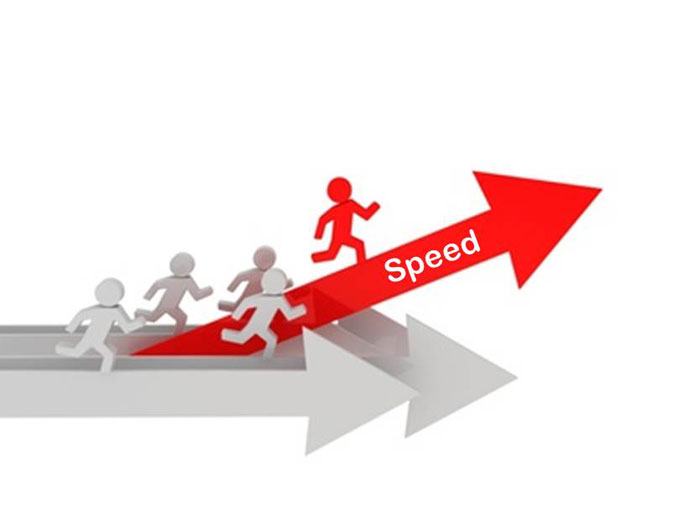
In the race for increased profits is speed leaving vital priorities behind? Assess all factors before jumping the gun.
In today’s new normal business environment, customers want products and services delivered quicker. Investors want month-end numbers faster. Customers expect new products yesterday. Executives are expected to sift through an immense amount of information and make rapid decisions. Boil it down – speed is a differentiator.
In my experience as an operations strategist and global business consultant and with hundreds of projects of all shapes and sizes behind me, I find that there can be hundreds or thousands of moving parts in any project or program. In these situations, it’s hard enough to keep track of all the pieces and tasks, let alone find ways to leverage speed. So, what should we do?
1. First, be clear on speed’s priority: Although speed is in the top 3 conversation pieces of every executive I’ve talked with in the last year, it doesn’t mean speed is a priority in every situation. I’d be surprised if every executive didn’t say “accelerating progress” was important; thus, just confirming this desire is not enough. Instead, you must probe further to better understand speed’s priority vs. other priorities.
Just having a conversation is a great place to start. In many of my clients, assumptions are made as to what the executives prefer, yet no one wants to ask/confirm. After all, who wants to take a risk and look dumb? You must! Be willing to ask clarifying questions.
For example, in one of my client projects, I’m partnering with my client to implement a sales and operations planning process. It is a corporate priority and can have a significant effect on whether the facility will meet its budget goals, and so it’s obvious that accelerating progress is critical. However, how does it compare with quarter-end results in terms of importance? Or with safety and quality goals? How about overtime pay? Have a discussion with the project sponsors and executives. Make sure they understand their choices and tradeoffs. Gain clarity in advance.
2. Start with the right mindset: Once the project leader has clarity on the priorities, it is important to take the time to frame the mindset with the project team. It might sound like the opposite of what you should do on a project where speed is vital; however, taking an extra few minutes, days or weeks upfront will accelerate progress in the long run.
For example, I’m working with a client on better leveraging their ERP system. The right mindset can take weeks to obtain yet it is one of the most important ingredients to gaining speed. What is the right mindset?
In this case, the project team could think we need to replace the old processes with an improved process upfront since we spent a considerable amount on the new system. Or, the team could think that because we didn’t have solid processes in place that we should implement “best practices” and go 100% with whatever the new system requires – should we do that regardless of our employees’ preparation? Or, on the other hand, the team might think they want to get back to their normal jobs (which align with their performance reviews), and so they just want to get the system done rapidly, even if they sacrifice a little in terms of quality.
Originally published in Project Times on January 16, 2013


